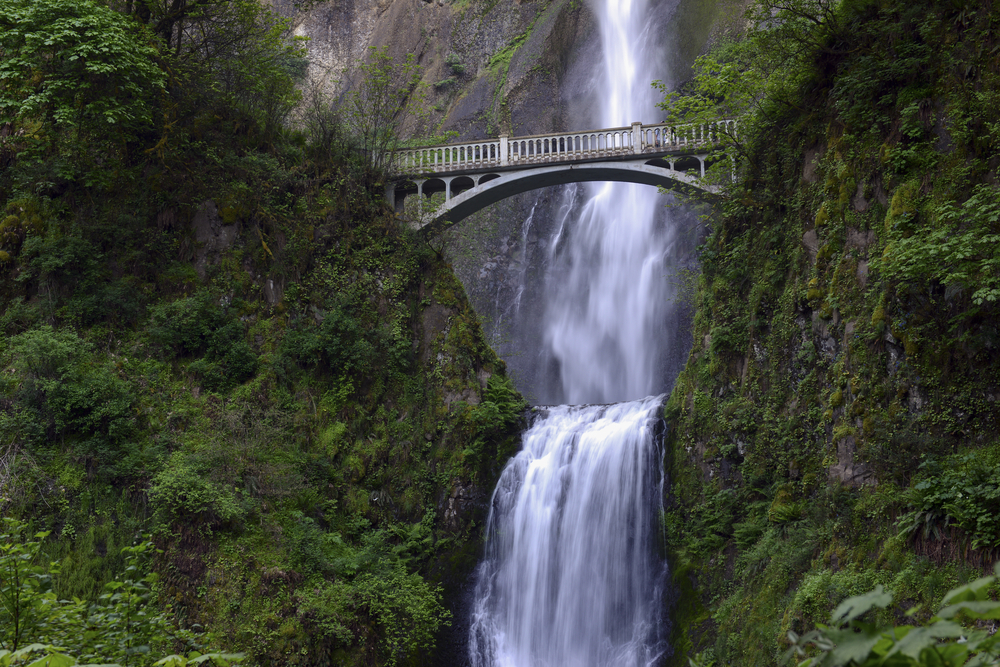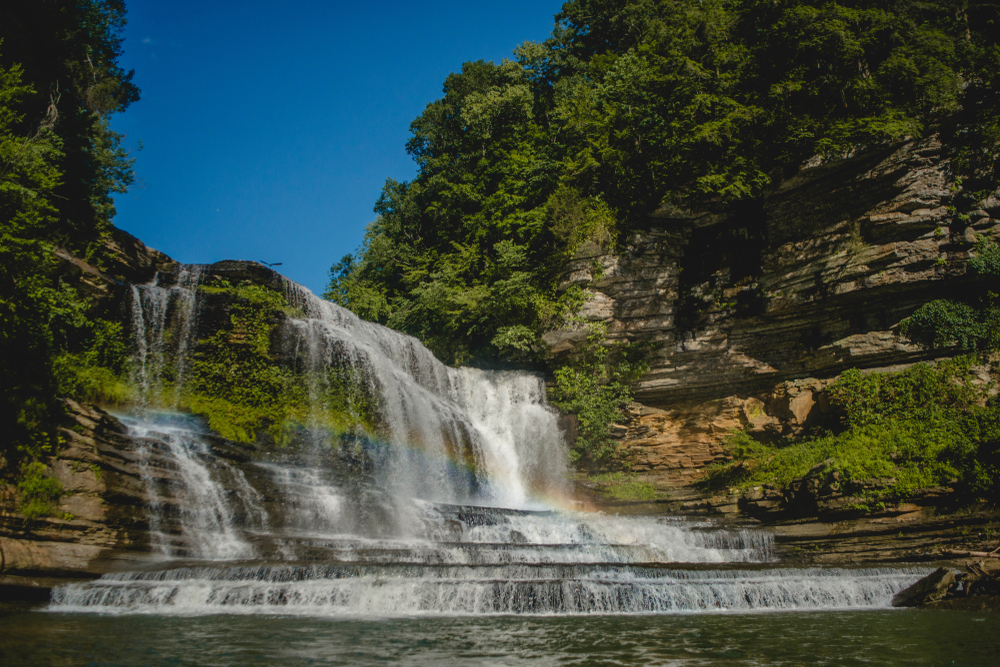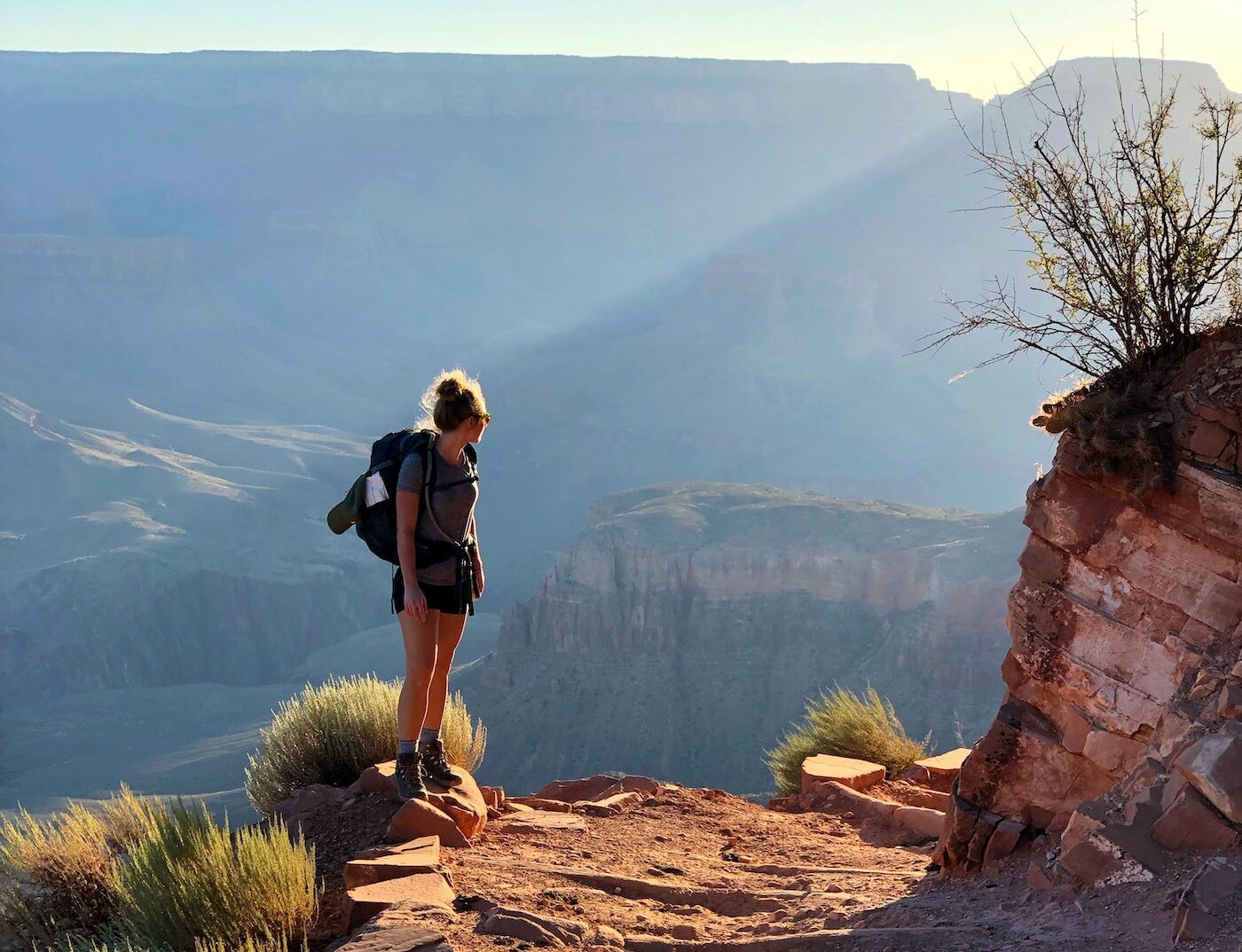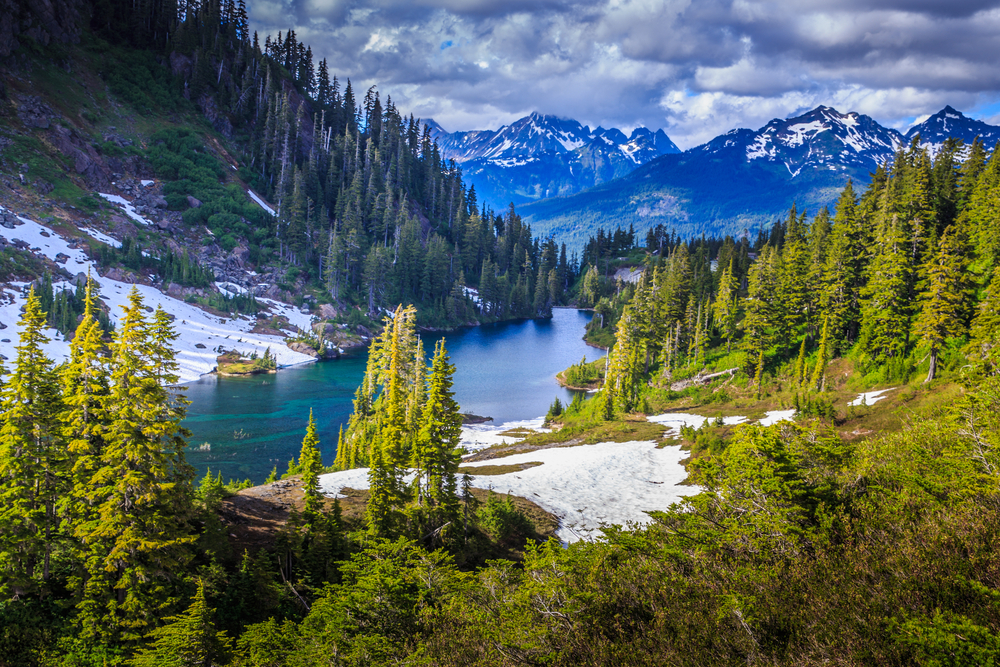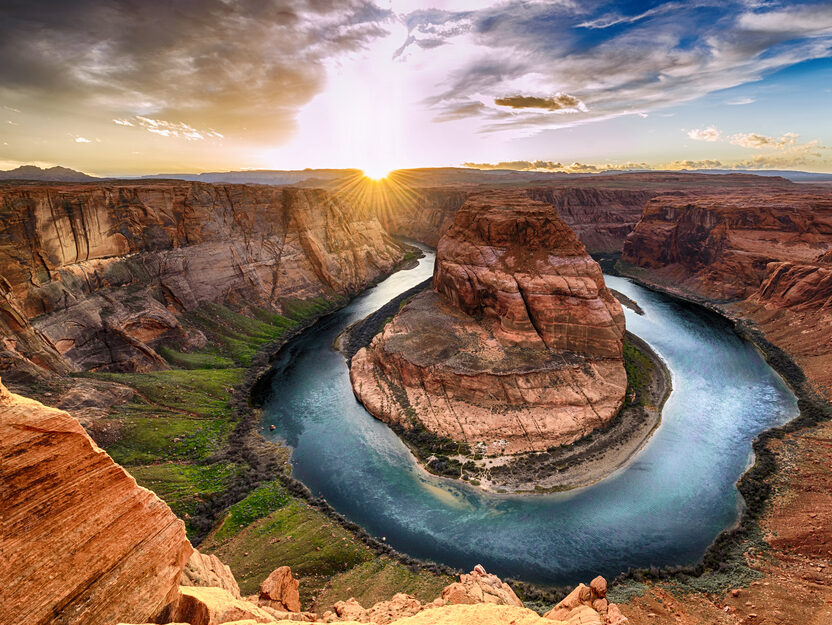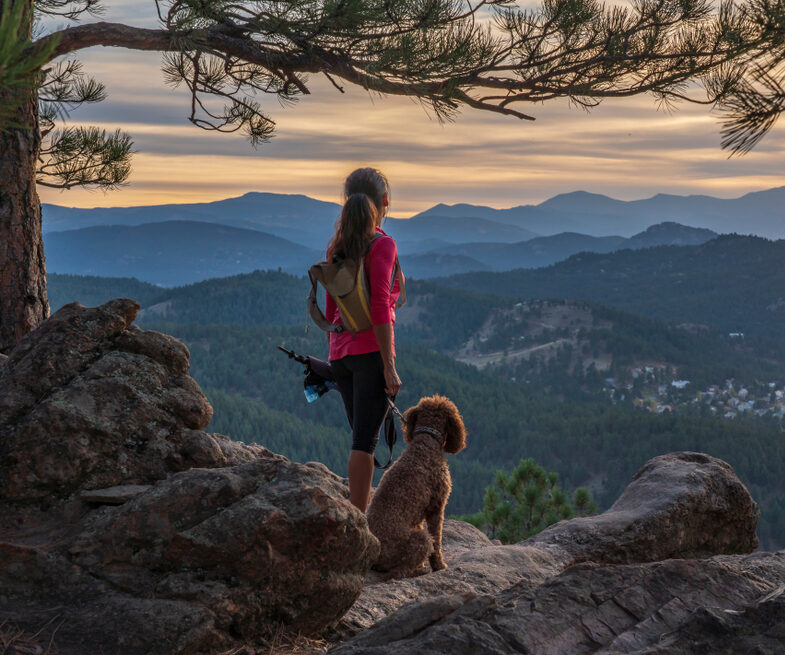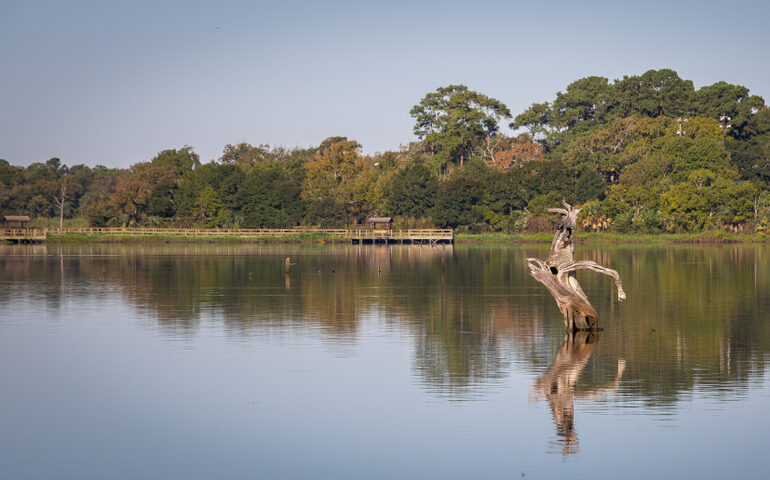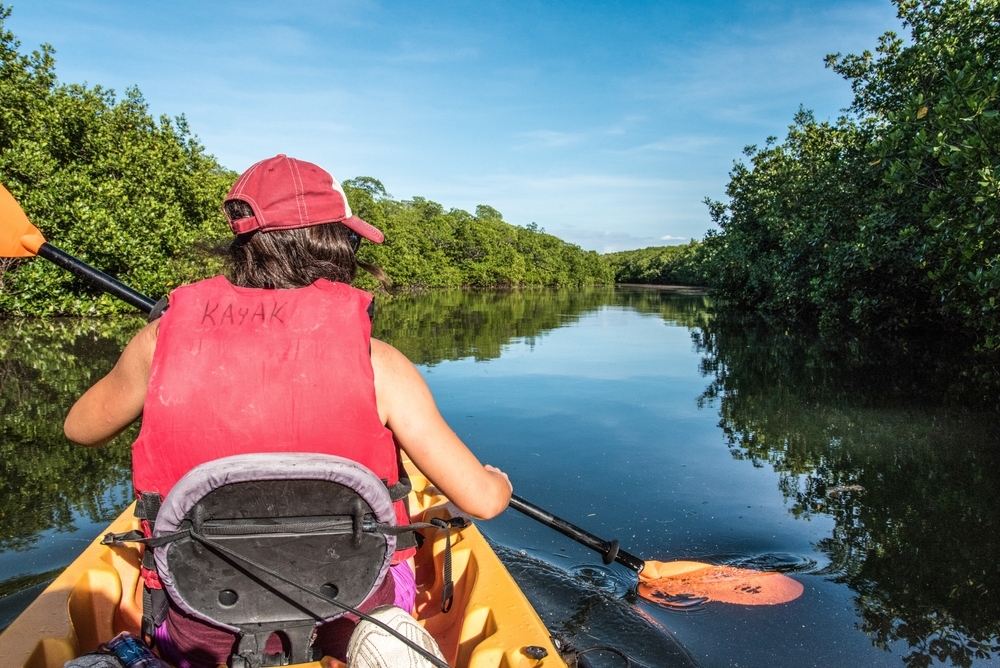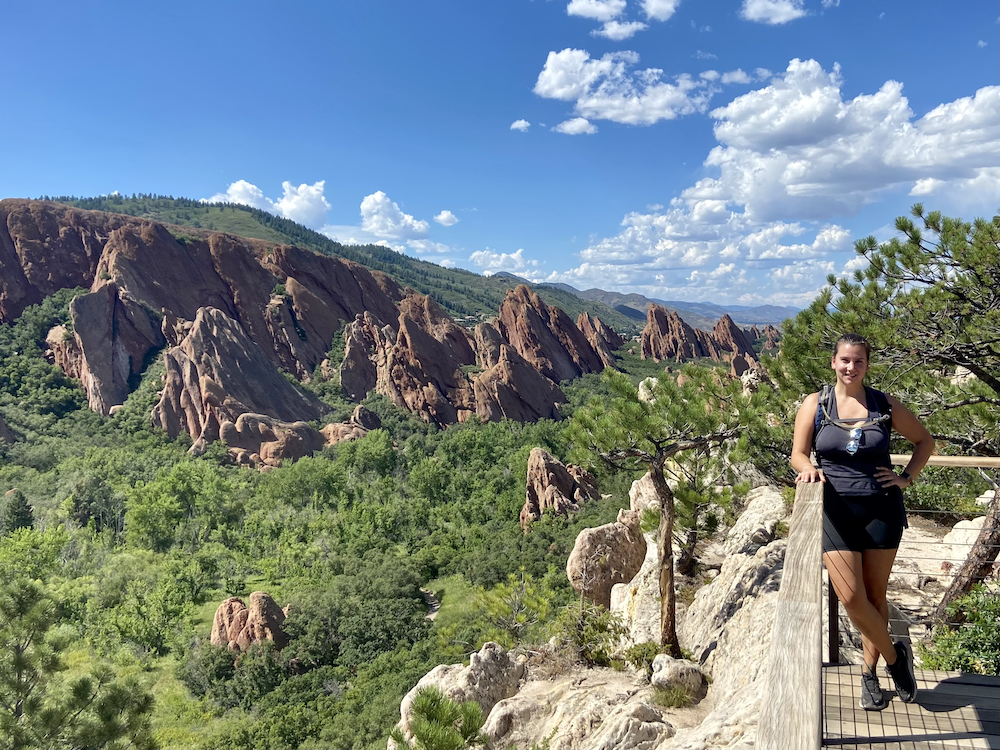
The 15 Best Hiking Trails in the U.S. to Check Off Your Bucket List
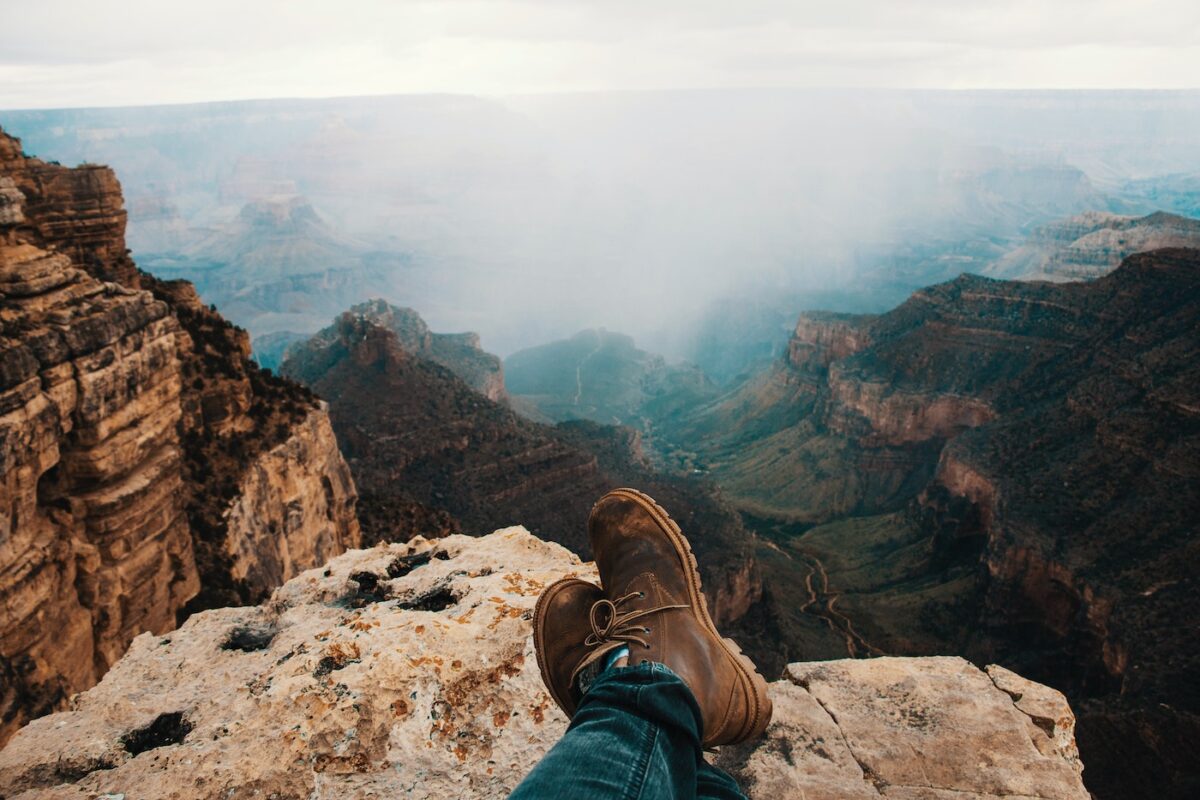
Whether you’re looking for quick day hikes to fit in during the work week or a multi-month trek along the world-famous cross-country Appalachian Trail, the United States is blanketed with some of the most stunning trails in North America. From the hot and heavy hiking trails in Zion National Park in the west to the forested wilderness and scenic shorelines of Acadia National Park in the east, there truly is a trek for every type of hiker.
If you really want to tackle a lot of trails in a short amount of time, you may want to base yourself in a state like California, where you’ll have easy access to both short and long-distance treks, wilderness and canyon areas in Yosemite Valley, Big Sur, and along the 2,650-mile Pacific Crest Trail. Also consider that while heading to a National Park may be a no-brainer when it comes to finding popular hikes and one-of-a-kind scenery, know that your local state park is also likely to have tremendous trails that also tend to attract fewer visitors.
So, whether you’re a novice trekker looking for an easy hike or a seasoned thru-hiker planning the alpine backpacking trip of a lifetime, here are some of the best hiking trails in the U.S. to check off your bucket list, including:
- Grand Canyon National Park Rim Trail
- Ice Age Trail
- The Appalachian Trail
- Mount Percival
- Seneca Rocks Trail
- Taggert Lake and Bradley Lake Loop
- Hunter Mountain via Spruceton Trail
- Bowman Lake Trail, Glacier National Park
- Half Dome Hike
- Piedras Marcadas Canyon
- Precipice Loop
- Hall of Mosses Trail
- Devils Garden
- Black Elk Peak Loop Trail
- Hanakapi’ai Beach via the Kalalau Trail
Let’s get started!
1. Grand Canyon National Park Rim Trail (Arizona)

Very serious hikers may want to tackle the round-trip, rim-to-rim trail from one side of the Grand Canyon, down to the Colorado River, up the other side, then back out again. But for those without the time, interest, or leg muscles to endure the distance and extremely steep ascents, know there is a less intense way to enjoy the Grand Canyon.
The Grand Canyon National Park Rim Trail stretches 12 miles along the southern rim of the Grand Canyon, offering hikers a mostly flat option with nonstop spectacular views of the canyon. It’s also one of the only pet-friendly portions of the park, as leashed dogs are allowed along the rim. Animals are not permitted out of the car in most other sections of the park.
Another fabulous route is the South Kaibab Trail to Skeleton Point, a steep, challenging trek that affords 360-degree panoramic views of the canyon.
Grand Canyon National Park is a three-and-a-half-hour drive from both Phoenix and Scottsdale and a five-hour drive from Tucson, Arizona, making it an easy weekend getaway from any of these cities.
2. Ice Age Trail (Wisconsin)
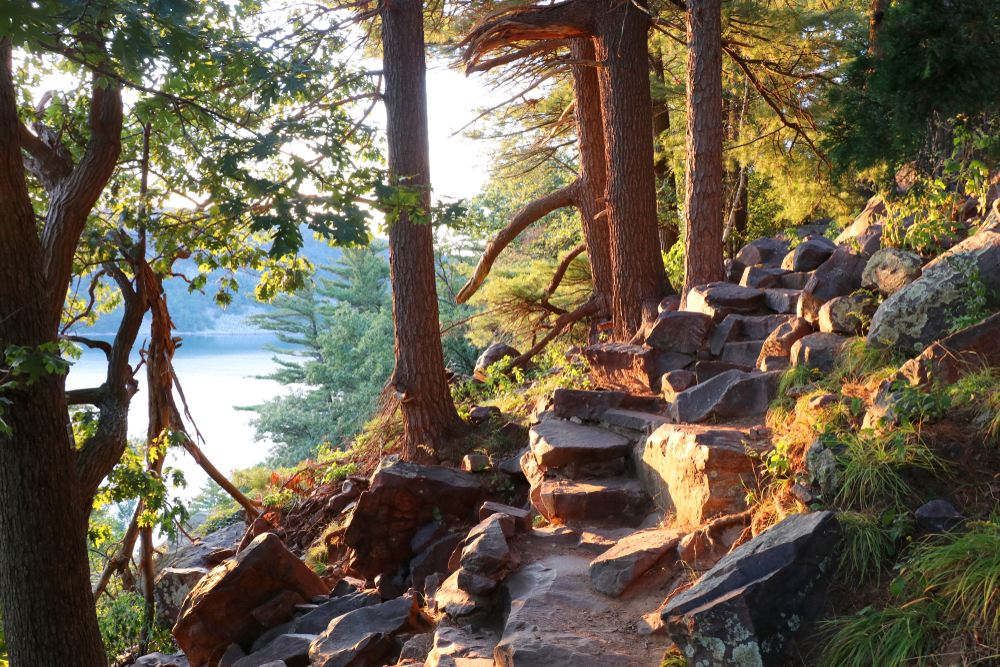
Wisconsin’s 1,200-mile Ice Age Trail is a network of small-town day hikes and multi-day wilderness treks that showcase the diversity of the Dairy State. Hiking the full 1,200 miles is certainly possible (and a handful of dedicated hikers have done it), but if you’re looking for an especially scenic option that’s not a long-distance thru-hike, the Scuppernong section can’t be beat.
Not only is the seven-mile trail mostly flat (aside from a few rolling hills), but the relatively easy hike meanders through the dense Kettle Moraine State Forest, which is particularly picturesque when its pine trees are covered in snow. This family-friendly (and dog-friendly!) trek is one of the best day hikes in Wisconsin and is only about 40 minutes from Milwaukee and one hour from Madison.
3. The Appalachian Trail (North Carolina, New York, Maine, and other states)
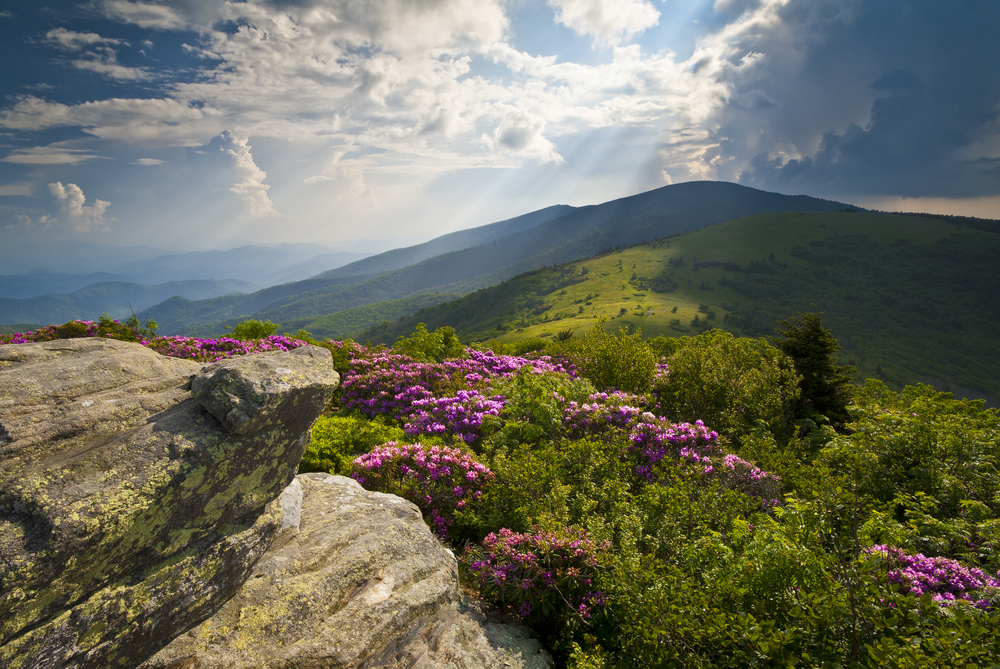
Beginning in Georgia and terminating in Maine, the Appalachian Trail is 2,180 miles long from end to end. Like the Pacific Crest Trail in the west, the AT runs through small towns and wilderness regions in multiple states. Point-to-point trails like this one require a bit more planning, particularly in terms of arranging transportation to and from trailheads and securing food if you’re hiking very long and isolated sections.
Tackle the entire trail (with some serious research in advance!), or enjoy smaller segments that run through North Carolina, Pennsylvania, and nearly every state in the northeast. The Appalachian Trail is extremely diverse, making its way through scenic, wooded, wild, and pastoral landscapes, so regardless of which section(s) you hike, you’re sure to enjoy a great view and meet some interesting people along the way.
4. Mount Percival (New Hampshire)

At just under five miles, Mount Percival is one of the most popular hikes in New Hampshire, so you can certainly expect to find some company on this moderately challenging out-and-back trail. Note that the last half-mile of the hike requires you to scramble up a steep rock ledge and through a narrow cave opening, so it requires some flexibility—and some nerves.
For an eight-mile hike that has twice the elevation (about 2,200 feet total), you can easily tack on the adjacent Mount Morgan trail to your loop. The large, expansive wilderness lights up with brilliant shades of yellow, orange, and red in the fall, making it an especially gorgeous time to visit.
Two hours north of Boston, Massachusetts, Mount Percival makes for a great day trip—though you could very easily spend several days exploring the region.
5. Seneca Rocks Trail (West Virginia)

West Virginia is known for its majestic mountains and spectacular scenery, and the Seneca Rocks Trail, a 3.5-hour drive from Pittsburgh, is the perfect way to experience both. The trail—which can get quite steep at times—winds uphill through the woods past small rivers and viewing platforms that serve as the ending point for many hikers.
Adventurers who aren’t afraid of heights will scramble up the rock face to the top of Seneca Rocks to enjoy breathtaking views of the region. As the rocks are a popular destination for climbers, you’ll likely see a few making their way to the top from a very different route.
6. Taggert Lake and Bradley Lake Loop (Wyoming)

Grand Teton National Park is full of heart-stopping sights, from its snow-capped peaks and glistening lakes to its bountiful bears, moose, marmots, and elk. It’s also full of people, particularly from June to August. To avoid the crowds, we recommend avoiding weekends, aiming for the shoulder-season months of May and September, and arriving at the trailhead early.
The Taggert Lake Trail is slightly less popular than nearby Jenny Lake, but you’ll still want to get an early start. While you could turn around after Taggert Lake—actually, most people do—you can also add on a couple of miles (and a bit more elevation) to include Bradley Lake. This seven-mile round-trip trek will take you along wildlife-rich trails where you’ll encounter far fewer people.
The National Park is a quick 10-minute drive from Jackson Hole, Wyoming, but you can also make the most of your journey by camping within the park.
7. Hunter Mountain via Spruceton Trail (New York)

The Big Apple may be best known for glitz and glamor (and its ultra-urban Highline Trail), but just three hours north of Manhattan are the Catskill Mountains, which feel sort of like a big, mountainous state park. Hunter Mountain is the second-tallest peak in the Catskills, and while it certainly wouldn’t be considered a high-elevation hike, you’ll definitely notice the 2,100 feet of elevation gain as you head up.
Scenic views pop out around every turn, and if you can handle a few (dozen) more steps, make your way to the top of the Hunter Mountain Fire Tower for a 360-degree view of the region.
While the trail is most popular from April to October, winter hiking is possible and offers absolutely stunning views. Just be sure to bring your ice spikes and hiking poles!
8. Bowman Lake Trail, Glacier National Park (Montana)
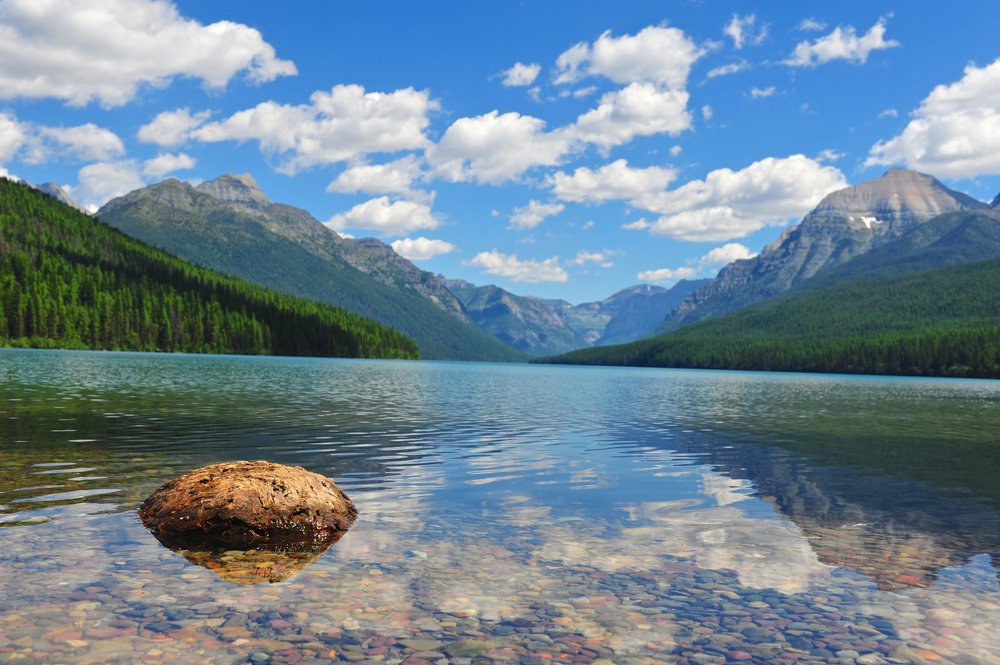
As soon as you get to the trailhead of Bowman Lake in Glacier National Park, you’ll be just about knocked over by the incredible views of the mountains reflecting back off the lake and the colorful rocks shining up through the water. Considering the lake is a bit out of the way of other main trails in the National Park, you’ll find far fewer people here than you would at Avalanche Lake and along the Going-to-the-Sun Road.
While people visit the lake just to get Instagrammable pictures of it, it’s well worth going beyond the trailhead, as this 26-mile round-trip trail offers impressive scenery along the entire route. If you plan to tackle the full hike, campsites are available along the way, and you’ll absolutely need bear spray. Additionally, while the park is technically a year-round destination, the massive amount of snow it receives (and the accompanying avalanche risk) means that much of the park is inaccessible between November and April.
The closest cities are Kalispell and Whitefish, both of which are small and mainly cater to National Park visitors.
9. Half Dome Hike (California)
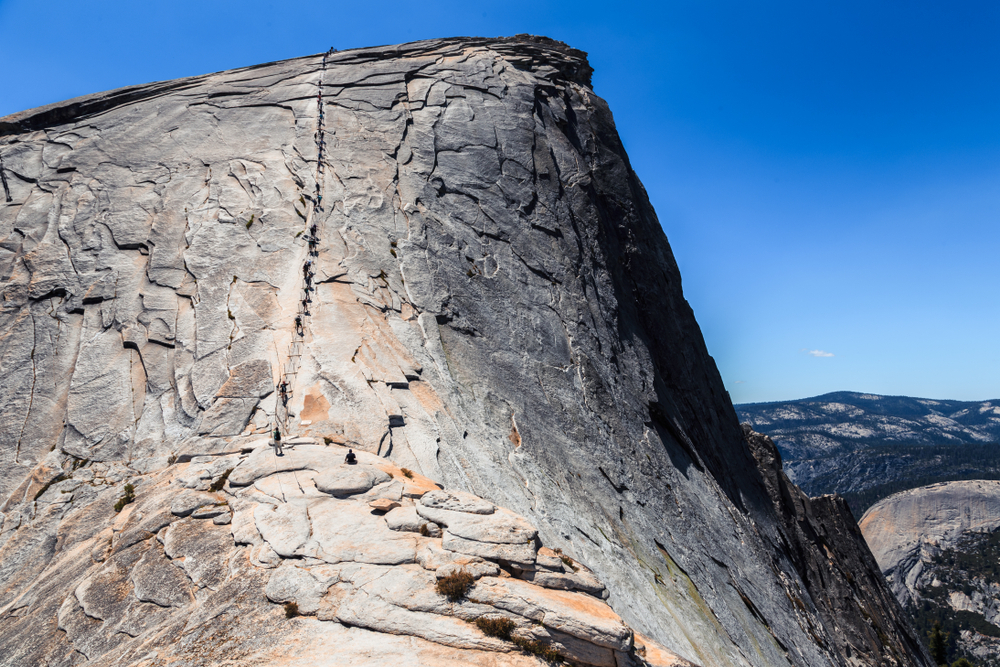
For many hiking enthusiasts in the country, Yosemite National Park is a bucket-list destination with seemingly endless opportunities to hike, climb, and camp. However, it’s also one of the most-visited National Parks in the country, which means you’ll want to plan your trip well in advance. This is particularly important if you’re hoping to secure hard-to-find camping permits along the 211-mile-long John Muir Trail, which requires a wilderness permit.
The 15-mile Half Dome Hike via the John Muir Trail is a more accessible hike, but its nearly 5,200 feet of elevation means you should expect to spend the majority of your day out there as you make your way to the spectacular granite Half Dome rock formation.
10. Piedras Marcadas Canyon (New Mexico)
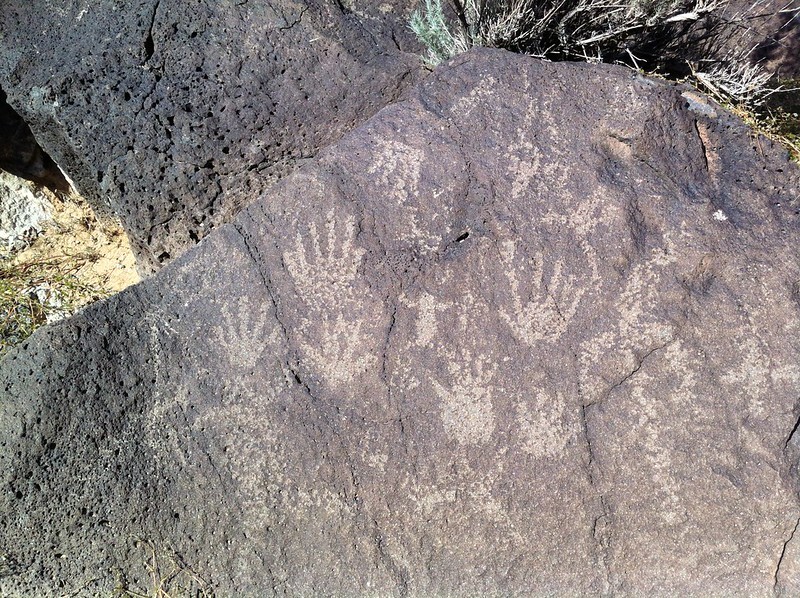
Image source: Flickr
Every single hike is unique, and just because a hike isn’t in a National Park or doesn’t go through an ancient old-growth forest doesn’t mean it’s not worth doing. The Piedras Marcadas Canyon trail in Albuquerque, New Mexico, is precisely one of those trails.
This trail falls within Petroglyph National Monument, which is sort of like a National Park, and it’s a unique occurrence of federally designated land located within a major city and immediately adjacent to houses. Since the trail is only 20 minutes from Albuquerque’s city center, and adjacent to the suburbs, you’ll see much of the city from the trail—but that’s not why you’re here.
Ignore the homes and head toward hundreds of Native American petroglyphs and rock paintings as this two-mile trail winds through the arid desert landscape. Though the trail is short, the weather can be extreme in the desert. So, if you head here in the summer, be sure to arrive early and bring lots of water.
11. Precipice Loop (Maine)
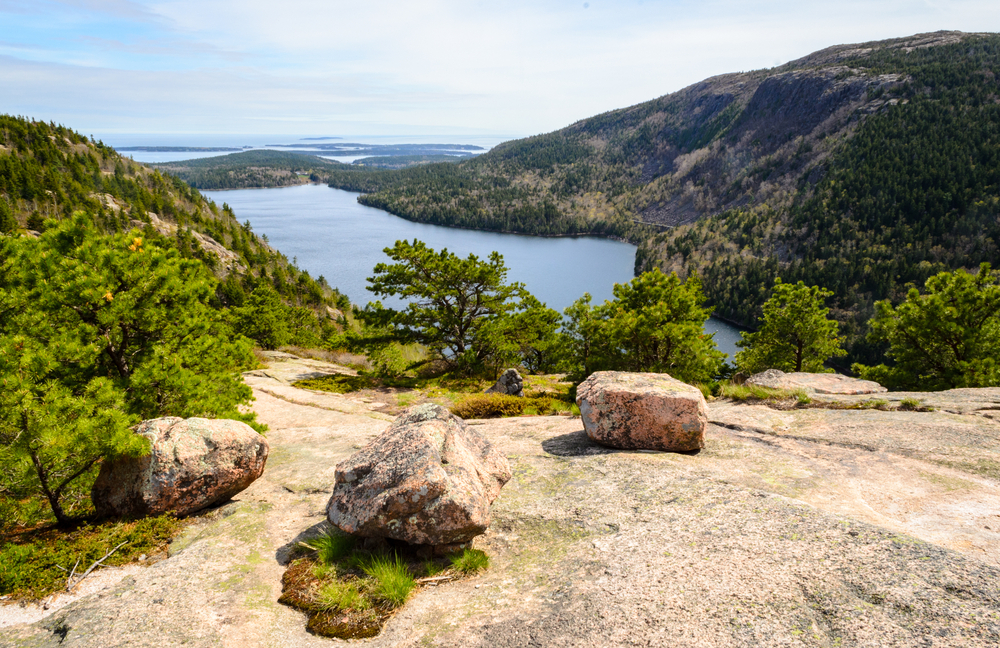
Can’t decide if you want to explore a park by foot, bike, or car? Head to Maine, where you don’t have to choose. Acadia National Park is blanketed with hiking trails meandering through the forest, bike paths winding along the valleys, roads that guide cars to coastal lighthouses, and motor-free carriage trails that were initially built by John Rockefeller for horse and carriage travel.
The Precipice Loop trail is one of the most popular in the park and for good reason. The two-mile loop trail travels along the stunning Maine coast and is also a great route for birding. The trail may be short, but it includes about 1,000 feet of elevation. You’ll also have to climb some iron rungs, which is a fun challenge for some hikers but may be too strenuous for others.
The best time to visit is between April and November, with October being prime leaf-peeping season in the region. This trail is located 10 minutes from tiny town Bar Harbor and is a three-hour drive from “big city” Portland, Maine.
12. Hall of Mosses Trail (Washington)
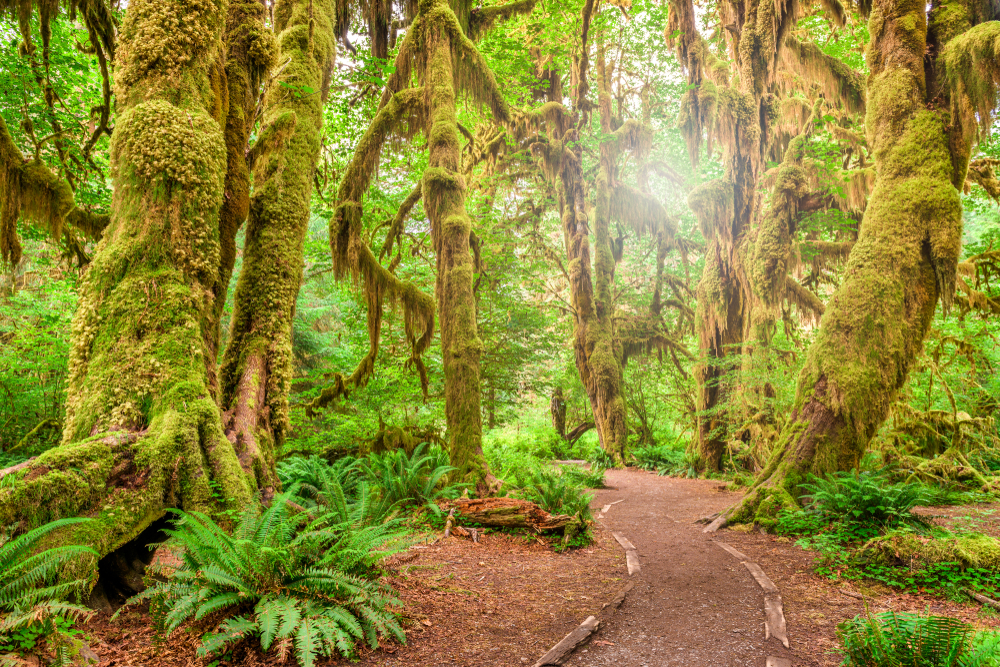
Don’t let the short distance fool you, as this mile-long hike packs a powerful punch when it comes to natural beauty. Massive, moss-covered trees pleasantly crowd around the path, while enormous pines soar into the sky. If the sun is just right—and it often is early in the morning—the Hall of Mosses Trail looks like a setting out of a fairy tale.
Aside from being unbelievably beautiful, this is also a fairly short and easy trail, so you can expect to see a lot of people (including families) on the trail. Dogs aren’t allowed here, so be sure to leave Fido at home.
The park is one and a half hours from Tacoma, two and a half hours from Seattle, and three hours from Portland, Oregon. While it’s open year-round, do consider that some of the park roads and visitor facilities are closed during the winter season.
13. Devils Garden (Utah)
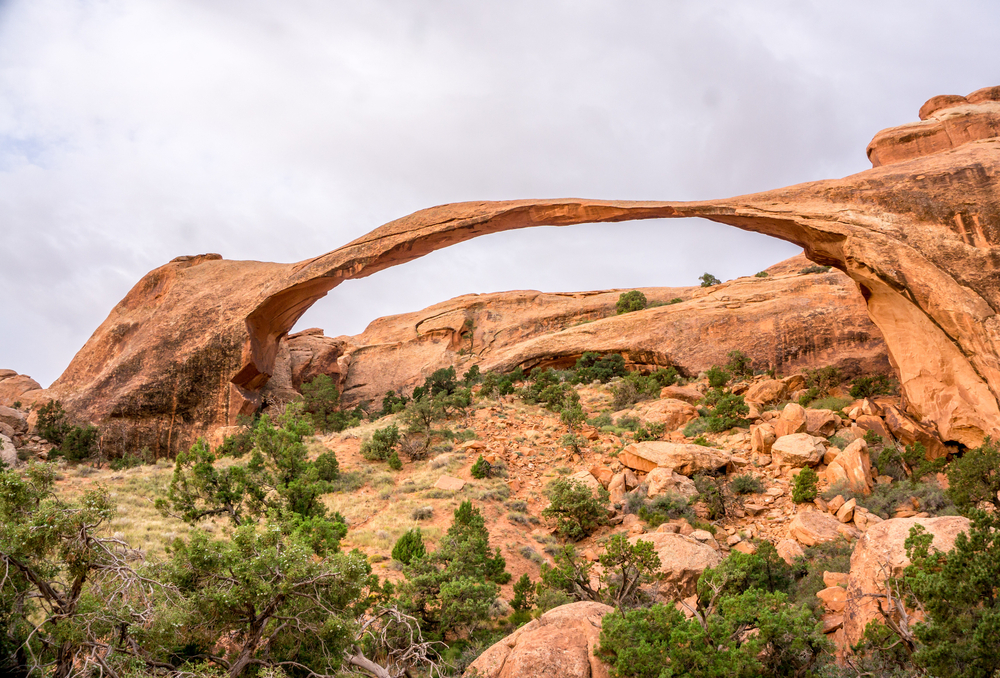
Arches National Park is one of the most beloved parks in the country due to its jaw-dropping desert beauty. Some of its most stunning sections—like its famous Windows section—are only a five-minute walk from the parking lot, but if you’re looking to get a “real” hike in, head to Devils Garden.
At about eight miles with 1,100 feet of elevation, this trail is not for the faint of heart. In addition to the length and elevation, there are several sections that aren’t well-marked and may require some scrambling, so it’s best for moderate to advanced hikers.
As the temperature regularly soars above 100 degrees in the summer, be sure to get an early start in June, July, and August and pack plenty of water, since there are no water fountains or gift shops in the desert. The area can also get so busy on summer mornings that cars are backed up waiting to enter the park, so it’s best to arrive before 8 a.m. or come later in the day when it’s a bit cooler.
Arches National Park is a 20-minute drive from Moab and a four-hour drive from Salt Lake City. Also, keep in mind that Canyonlands National Park is only 45 minutes away and Zion National Park is about a five-hour drive away, so it’s a great place to check a few National Parks off your list. Score!
14. Black Elk Peak Loop Trail (South Dakota)
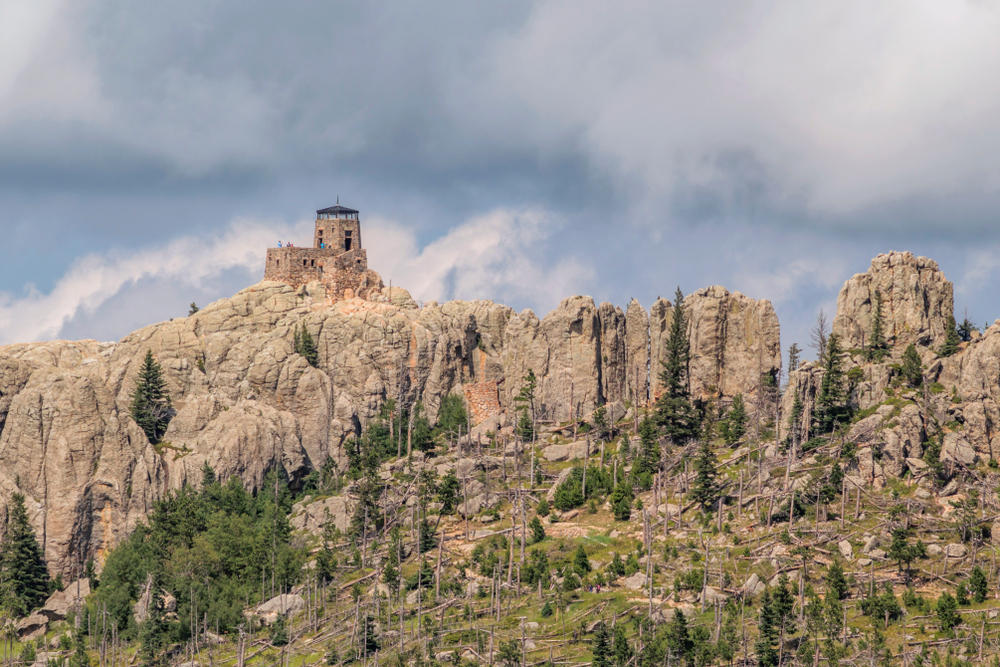
South Dakota is brimming with natural beauty. With two National Parks (Badlands and Wind Cave), and extraordinary historic sites like Mount Rushmore and the Crazy Horse Memorial, the state attracts its fair share of nature lovers. That said, federal parks and historic sites aren’t the only natural national treasures on display. State parks are often overlooked, but in South Dakota, Custer State Park easily holds its own.
Smack dab in the middle of the Black Hills is one of the best hikes in the park, Black Elk Peak Loop. This seven-mile loop trail offers impressive views of the surrounding wilderness. The route can also be lengthened by adding on the Cathedral Spires spur trail (which offers great views of the park’s famous rock formations), or the Little Devil’s Tower spur trail.
There are some steep, rocky sections here, so it’s best for moderate to advanced hikers.
15. Hanakapi’ai Beach via the Kalalau Trail (Hawaii)

If Hawaii is known for one thing, it’s spectacular scenery. From dense jungles and magical mountains to seaside scenery that can be explored by foot, bike, or boat, Hawaii is the perfect place for nature lovers. Hiking options abound across the chain of islands, but the four-mile Kalalau Trail is extra special. This route is moderately challenging, as it rotates between flat dirt paths and steep, rocky inclines that can be slippery if it’s been raining.
Prepare to be blown away by coastal views of the Pacific Ocean and the delicate beauty of brilliantly colored wildflowers within the forest itself. The trail finishes at Hanakapi’ai Beach, a stunning beach blocked by sheer, fluted cliffs. It’s located within Hā’ena State Park on Kauai island, which you’d need to fly to from Honolulu on neighboring O’ahu island.
Start checking off your hiking bucket list by living with Landing
If you’re looking to travel the country to explore the best of the great outdoors but need somewhere to live, Landing offers digital nomads fully furnished apartments in over 375 cities throughout the U.S., along with flexible leases that make it easy to try out somewhere new, then move on when you’re itching to go somewhere else. Landing’s network of fully furnished apartments creates the perfect home base (or bases!) while you try out the best hikes in the country. Learn more about what a Landing membership can do for you.
